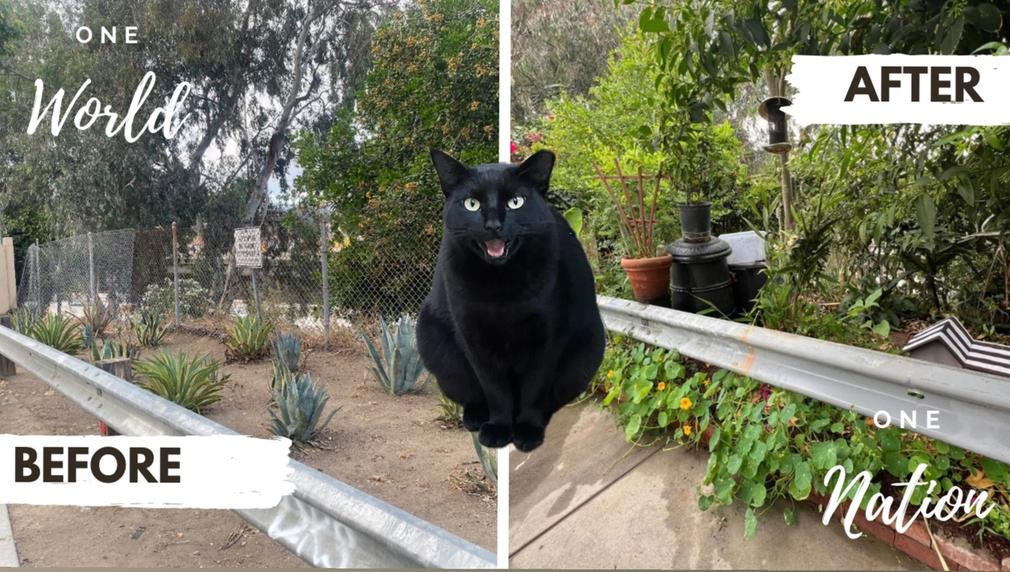One World One Nation Transforming Unused Spaces into Thriving Urban Food Forests
This project will convert an ordinary sidewalk into a vibrant, community-led food forest offering free, organic produce. It will nourish both people and environment by transforming underused urban space into a living ecosystem. The initiative blends sustainability, public infrastructure, and local empowerment to advance food access, environmental resilience, and civic pride.

What is the primary issue area that your application will impact?
Green space, park access, and trees
In which areas of Los Angeles will you be directly working?
Central LA
In what stage of innovation is this project, program, or initiative?
Expand existing project, program, or initiative (expanding and continuing ongoing, successful work)
What is your understanding of the issue that you are seeking to address?
We seek to address the challenges of limited green space, unequal park access, and income inequality by transforming an underused sidewalk into a vibrant community food forest. Aligned with LA2050’s vision for a healthier, more equitable Los Angeles, this initiative will increase urban greenery to fight climate change, while creating a welcoming public space that fosters connection, and environmental awareness. Most critically, it will provide free, nutritious produce to help close the food access gap for low-income residents, supporting healthier communities and advancing food justice. We are addressing the intersection of food instability, environmental inequity, and lack of green space in underserved communities. By converting a neglected sidewalk into a thriving food forest, we aim to reduce barriers to fresh food access, counteract the urban heat island effect, and create a space that invites community connection and stewardship.
Describe the project, program, or initiative this grant will support to address the issue.
This grant will catalyze critical improvements to our pilot sidewalk food forest, beginning with the installation of a dedicated water source, replacing our current inefficient 300-meter hose. We will construct raised garden beds to improve growing conditions, perform soil and plant testing to ensure safety and productivity, and build a multifunctional garden shed that also serves as a greenhouse, tool storage, and rainwater catchment hub.
To strengthen engagement, we will enhance our website and digital presence for outreach and education. We’ll also host a series of interactive community workshops on composting, container gardening, cooking with harvested ingredients, and preparing nutritious beverages such as water kefir and fresh juices. Educational signage and plant labeling will help visitors connect with the food forest and its purpose. It will also provide food for the resident cat named Guapa that helps maintain that food forest by curtailing the presence of rodents.
Together, these improvements will deepen our roots in the community, promote long-term sustainability, and model how public land can be reclaimed for food access and environmental healing.
Describe how Los Angeles County will be different if your work is successful.
If successful, this project will help reshape Los Angeles into a city where every neighborhood flourishes with nutritional, educational, and restorative green spaces. Sidewalks will no longer be overlooked strips of concrete but vibrant community assets that feed, teach, and inspire. Residents will enjoy improved access to healthy food, especially in areas long underserved. Public spaces will reflect local pride, reduce climate impacts, and promote intergenerational learning and cultural exchange. Our model can be replicated throughout the city, planting the seeds for a more resilient and interconnected Los Angeles.
Approximately how many people will be impacted by this project, program, or initiative?
Direct Impact: 200
Indirect Impact: 2,000